Subin Yang
Descanning: From Scanned to the Original Images with a Color Correction Diffusion Model
Feb 08, 2024
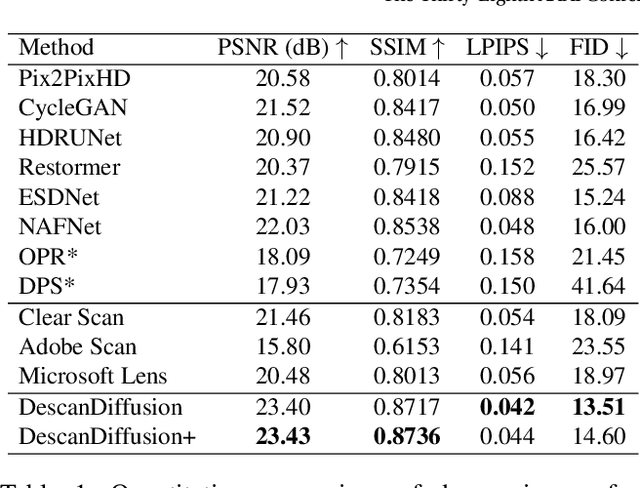

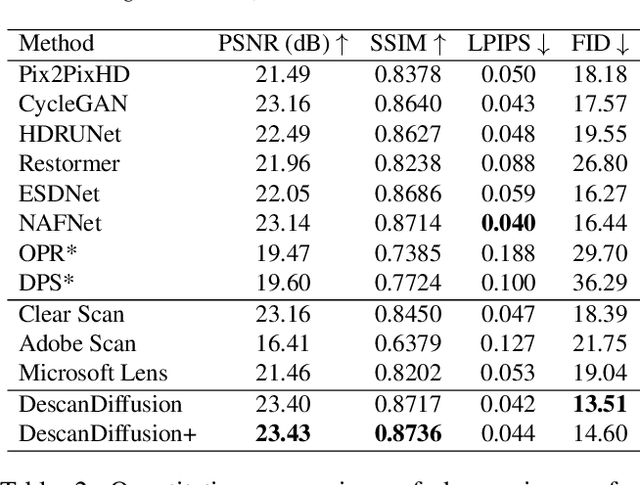
Abstract:A significant volume of analog information, i.e., documents and images, have been digitized in the form of scanned copies for storing, sharing, and/or analyzing in the digital world. However, the quality of such contents is severely degraded by various distortions caused by printing, storing, and scanning processes in the physical world. Although restoring high-quality content from scanned copies has become an indispensable task for many products, it has not been systematically explored, and to the best of our knowledge, no public datasets are available. In this paper, we define this problem as Descanning and introduce a new high-quality and large-scale dataset named DESCAN-18K. It contains 18K pairs of original and scanned images collected in the wild containing multiple complex degradations. In order to eliminate such complex degradations, we propose a new image restoration model called DescanDiffusion consisting of a color encoder that corrects the global color degradation and a conditional denoising diffusion probabilistic model (DDPM) that removes local degradations. To further improve the generalization ability of DescanDiffusion, we also design a synthetic data generation scheme by reproducing prominent degradations in scanned images. We demonstrate that our DescanDiffusion outperforms other baselines including commercial restoration products, objectively and subjectively, via comprehensive experiments and analyses.
Multi-Attention Based Ultra Lightweight Image Super-Resolution
Sep 21, 2020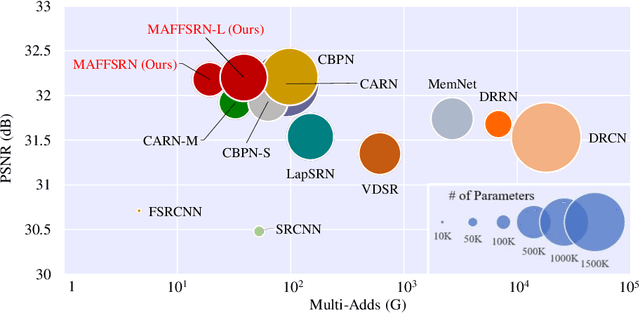
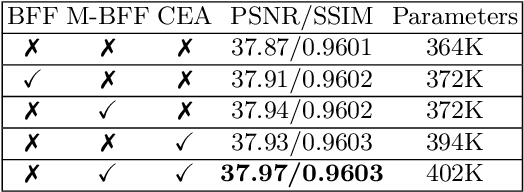


Abstract:Lightweight image super-resolution (SR) networks have the utmost significance for real-world applications. There are several deep learning based SR methods with remarkable performance, but their memory and computational cost are hindrances in practical usage. To tackle this problem, we propose a Multi-Attentive Feature Fusion Super-Resolution Network (MAFFSRN). MAFFSRN consists of proposed feature fusion groups (FFGs) that serve as a feature extraction block. Each FFG contains a stack of proposed multi-attention blocks (MAB) that are combined in a novel feature fusion structure. Further, the MAB with a cost-efficient attention mechanism (CEA) helps us to refine and extract the features using multiple attention mechanisms. The comprehensive experiments show the superiority of our model over the existing state-of-the-art. We participated in AIM 2020 efficient SR challenge with our MAFFSRN model and won 1st, 3rd, and 4th places in memory usage, floating-point operations (FLOPs) and number of parameters, respectively.
AIM 2020 Challenge on Efficient Super-Resolution: Methods and Results
Sep 15, 2020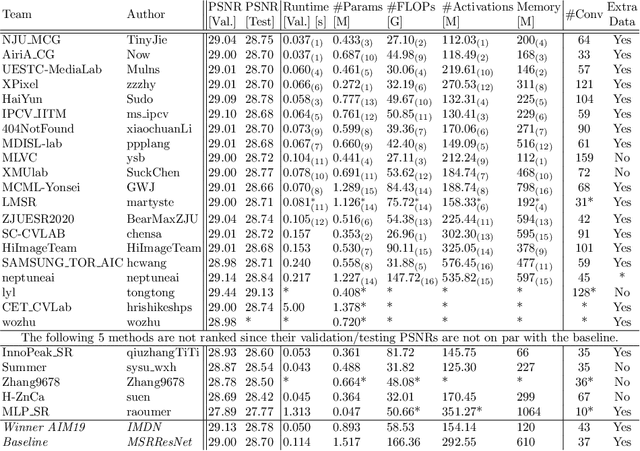
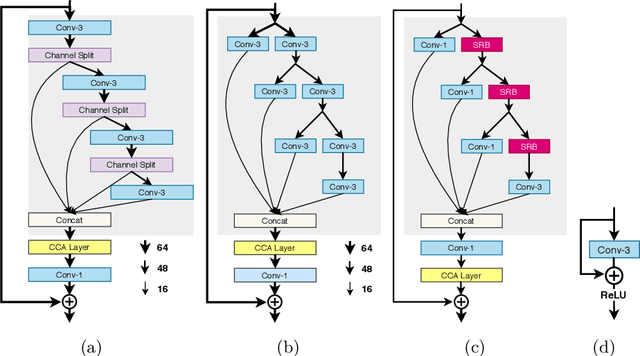

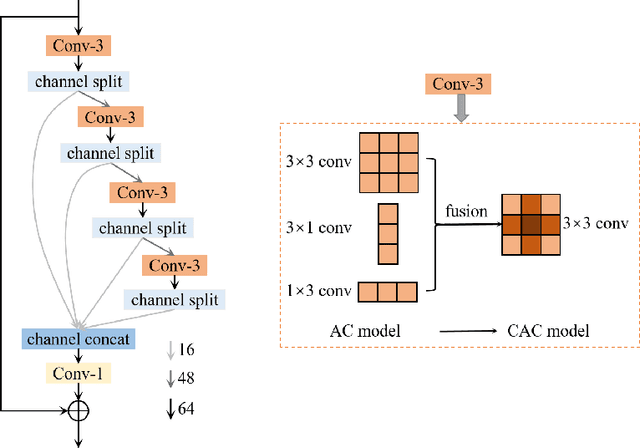
Abstract:This paper reviews the AIM 2020 challenge on efficient single image super-resolution with focus on the proposed solutions and results. The challenge task was to super-resolve an input image with a magnification factor x4 based on a set of prior examples of low and corresponding high resolution images. The goal is to devise a network that reduces one or several aspects such as runtime, parameter count, FLOPs, activations, and memory consumption while at least maintaining PSNR of MSRResNet. The track had 150 registered participants, and 25 teams submitted the final results. They gauge the state-of-the-art in efficient single image super-resolution.
 Add to Chrome
Add to Chrome Add to Firefox
Add to Firefox Add to Edge
Add to Edge